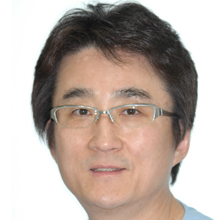Biomechanics of Lingual Orthodontics and TSAD
Biomechanics of Lingual Orthodontics and TSAD
Ryoon-Ki Hong DDS, PhD, Chong-A Orthodontic Clinic
Since the invention of lingual brackets by Fujita in 1979, many types of lingual brackets have been developed and each bracket system has its unique design. Lingual brackets can be classified by the direction of slot opening. Some lingual brackets have a lingually opening horizontal slot and others have an occlusally opening vertical slot.
In one lingual bracket system the anterior brackets have vertical slots, whereas the posterior brackets have horizontal slots. Most labial brackets, by contrast, only have single edgewise horizontal slots and are generally effective in controlling tooth movement. Some lingual brackets have horizontal slots and others vertical slots because each slot design is advantageous for a certain type of tooth movement.
Anboini multislotted lingual brackets, which have 3 slots and can be used with straight archwires, were developed for perfect 3- dimensional tooth control. In addition to the main 0.0180.025-in horizontal slots, the multislotted lingual brackets have a 0.0190.019-in vertical slot for rotation control and a 0.0160.016-in accessory slot for angulation control. Selecting the appropriate slot for each desired tooth movement facilitates simple and effective lingual orthodontic treatment.
Because the hard palate is large and high, micro-implants can be placed into various areas such as anterior rugae, lateral wall, and vault. Therefore, many temporary palatal anchorage devices have been introduced. I developed a multi-tasking micro-implant which is placed into the safe and solid paramedian area of the posterior hard palate. Its diameter and length are 2 mm and 4 mm, respectively. The most interesting feature of this micro-implant is a hexagonal head with two cross-shaped 0.032×0.032-inch slots, which provides easy placement and removal of 0.032×0.032-inch stainless steel or TMA power arm. The appropriately fabricated diverse power arms are fixation into the micro-implant head to apply orthodontic force in any required direction.
Placing the various forms of power arm into the SMS micro-implant, various midpalatal absolute anchorage systems (MAAS) are designed. Considering the center of resistance and the forces applied, this lecture describes the biomechanics behind tooth movement in various spatial planes with Anboini lingual orthodontic methods that use the SMS micro-implant.
Biography
Chair of Department of Orthodontics, Department of Orthodontics, Chong-A Dental Hospital, South Korea
EDUCATION
DDS, School of Dentistry, Seoul National University, Korea (1985)
Orthodontic specialty training at the Department of Orthodontics, Dental School, Tsurumi University, Japan (1987.4-1991.3)
PhD, Dental School, Tsurumi University, Japan (1991)
Diplomate, WBLO (World Board of Lingual Orthodontists), (2011) PROFESSIONAL ACTIVITY
Director, Chong-A Orthodontic Clinic, Seoul, Korea.
Adjunct Assistant Professor, Department of Orthodontics, College of Dentistry, Seoul National University, Seoul, Korea
Adjunct Associate Professor, Department of Orthodontics, College of Dentistry, Dankook University, Chonan, Korea
Adjunct Professor, Department of Dentistry, University of Ulsan, Seoul, Korea
President of Korean Association of Lingual Orthodontists (KALO) (2010-2012)
Councilor, Korean Association of Orthodontists (KAO) (2008~2019) MEMBERSHIPS
Founding member, Korean Association of Lingual Orthodontists (KALO)
Active member, World Society of Lingual Orthodontics (WSLO)
Active member, European Society of Lingual Orthodontics (ESLO)
Active member, Korean Association of Orthodontists (KAO)
International member, American Association of Orthodontists (AAO)
Fellow, World Federation of Orthodontists (WFO)

